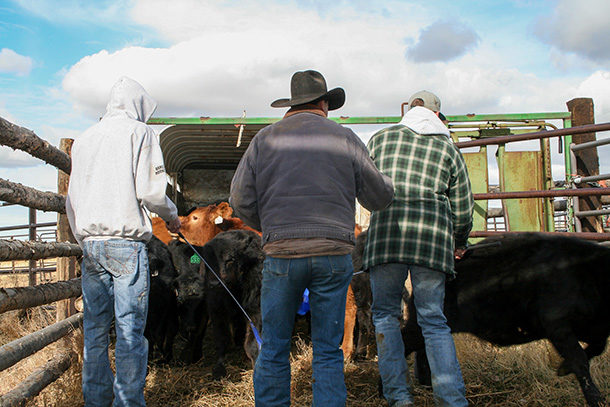Well begun is half done. This old idiom could be restated, “A calf well started is half finished.” If done well, a receiving program sets cattle up for a successful closeout. However, if done poorly, it can set cattle back so there is no catching up.
So, what are the keys to a successful receiving program? There are some standard, time-tested concepts that have been around for decades and there are also some new concepts and ideas to consider. Regardless of concepts or strategies, this is the period where the nutritionist and veterinarian need to be on the same page. Many of the factors that determine the optimum receiving program also inform decisions on their health protocol. Here are few ideas to consider:
- Evaluate the stress level of cattle. Are the cattle high-risk calves that have been potentially exposed to respiratory disease organisms? Have they been pre-weaned or will that happen in the feedlot? Have they been previously vaccinated, preconditioned or backgrounded? The higher the risk and exposure the more likely feed intake will be less. Classic research by Texas A&M University demonstrated that high-risk calves may take 30 days to reach a normal feed intake level even when healthy. Sick calves took longer. These calves may require three to four weeks on a constant receiving ration before stepping up to a finish ration. However, since their initial intake is lower, they can and should be fed a higher-energy ration. This may be counterintuitive to programs that would feed them more roughage.
- Rather than adding cattle to “build a pen,” isolate new cattle as much as your facilities will allow. More, smaller pens with plenty of bunk space are ideal for receiving pens. This not only helps reduce disease spread but allows for more specialized bunk and nutritional management specific to a group.
- Protein requirements are generally higher for receiving cattle. Natural protein sources are better choices than urea because their energy intake is often too low to utilize highly degradable protein sources. A ration balancing program that considers protein type and requirement, like the BRaNDS program, can help you navigate this. Mineral and vitamin requirements can be higher for receiving cattle, but don’t overdo it. Overfeeding a mineral can tie up other minerals and have adverse performance side effects.
- Feed additives like ionophores and coccidiostats may be needed. Only use medicated feed additives that have been proven safe and effective and have been cleared for use by the FDA. Other “natural feed additives” have no such FDA-approval requirement. For these products, always ask for good, unbiased (hopefully peer-reviewed) research to support the performance claim, and always consult your nutritionist.
—This originally appeared in the Iowa Beef Center September 2021 Growing Beef newsletter.








